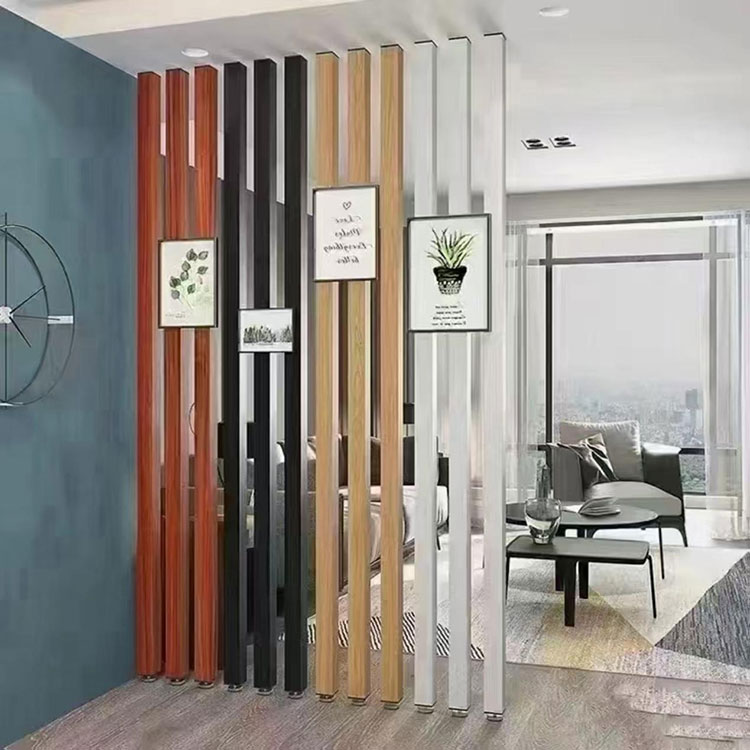- English
- Español
- Português
- русский
- Français
- 日本語
- Deutsch
- tiếng Việt
- Italiano
- Nederlands
- ภาษาไทย
- Polski
- 한국어
- Svenska
- magyar
- Malay
- বাংলা ভাষার
- Dansk
- Suomi
- हिन्दी
- Pilipino
- Türkçe
- Gaeilge
- العربية
- Indonesia
- Norsk
- تمل
- český
- ελληνικά
- український
- Javanese
- فارسی
- தமிழ்
- తెలుగు
- नेपाली
- Burmese
- български
- ລາວ
- Latine
- Қазақша
- Euskal
- Azərbaycan
- Slovenský jazyk
- Македонски
- Lietuvos
- Eesti Keel
- Română
- Slovenski
What Surface Finishing Options are Available for Extrusion Aluminum Profiles?

What are the surface finishing options available for extrusion aluminum profiles?
Extrusion aluminum profiles can be finished in several ways, including anodizing, powder coating, and painting. Anodizing is a process that creates a thin, protective layer on the surface of the profile, which can improve its resistance to corrosion and wear. Powder coating involves applying a dry powder to the surface of the profile, which is then heated and cured to create a durable finish. Painting is another option that can be used to achieve a specific color or finish.
What factors should be considered when choosing a surface finishing option?
When deciding on a surface finishing option for extrusion aluminum profiles, factors such as the profile's intended use, environment, and aesthetic considerations should be taken into account. For example, if the profile will be used in a highly corrosive or abrasive environment, a more durable finish such as anodizing or powder coating may be more suitable. If the profile will be highly visible and needs to have a certain color or texture, painting or powder coating may be a better option.
Can custom finishing options be applied to extrusion aluminum profiles?
Yes, custom finishing options can be applied to extrusion aluminum profiles. This may include unique colors, textures, or patterns to meet specific design requirements. Custom finishing options can be discussed with the manufacturer or a finishing specialist to determine the best approach for a particular project.
What are some benefits of using extrusion aluminum profiles for construction projects?
Extrusion aluminum profiles offer several benefits for construction projects, including their strength-to-weight ratio, durability, and versatility in design. They are also non-combustible and resistant to corrosion, which can make them a suitable choice for both interior and exterior applications. Additionally, aluminum is a sustainable material that can be recycled repeatedly without losing its properties.
How can extrusion aluminum profiles be used in the automotive industry?
Extrusion aluminum profiles are used in the automotive industry for various applications, including frames, body structures, and heat exchangers. Their lightweight yet strong properties can help improve fuel efficiency and reduce emissions. They are also resistant to corrosion, which can help extend the lifespan of automotive components. Additionally, aluminum's ability to dissipate heat can make it a suitable material for heat exchangers.
In conclusion, extrusion aluminum profiles offer a versatile and durable solution for various applications across industries. Choosing the right surface finishing option is an important consideration to ensure the profile's performance and appearance meet the project's requirements.
Foshan Zhengguang Aluminum Technology Co., Ltd. is a leading manufacturer of extrusion aluminum profiles with a focus on quality and customer satisfaction. Our profiles are available in various sizes and finishes to meet a wide range of applications. For more information and inquiries, please contact us at zhengguang188@outlook.com.
References:
1. Uddin M.A., and Rincon J. (2017). "Aluminum Extrusion Profile Monitoring and Fault Detection using Infrared and Visual Imaging Technique." Sensors (Basel, Switzerland) 17(8): 1854. doi: 10.3390/s17081854.
2. Wang H., Chen Z., and Gao Y. (2020). "Effect of Finishing Treatments on the Corrosion Resistance of AA6060-T5 in Seawater." Materials (Basel, Switzerland) 13(6): 1307. doi: 10.3390/ma13061307.
3. Wang K. (2018). "Application of Aluminum Profiles in Construction." Advances in Civil Engineering Materials 7(4): 441-445. doi: 10.1520/ACEM20170133.
4. Jafary-Zadeh M., and Ghazanfari A. (2017). "A Review of Aluminum Extrusion Process and Factors Affecting Quality of Extruded Parts." Advances in Materials Science and Engineering 2017: 1-13. doi: 10.1155/2017/6340472.
5. Shi Y., Li X., and Liao G. (2019). "Simulation of Thermal Stress in Aluminum Extrusion by Finite Element Method." Applied Sciences 9(19): 4058. doi: 10.3390/app9194058.
6. Chen Y., Liao K., and Lin G. (2017). "Casting and Extrusion of Aluminum Alloys." Materials Science Forum 891: 36-40. doi: 10.4028/www.scientific.net/MSF.891.36.
7. Chen H., et al. (2020). "Design and Test of a Vehicle Lightweight System Based on Aluminum Extrusion." Journal of Physics: Conference Series 1687(1): 012073. doi: 10.1088/1742-6596/1687/1/012073.
8. Xie L., et al. (2019). "Strength and Performance Analysis of Aluminum Extrusions for Large-scale Architecture." Journal of Materials Research and Technology 8(6): 5092-5103. doi: 10.1016/j.jmrt.2019.07.015.
9. Jiang X., et al. (2018). "Design and Analysis of Extruded Aluminum Heat-sink for LED Luminaires with Multiple Heat Sources." Journal of Thermal Science and Engineering Applications 10(6): 061005. doi: 10.1115/1.4039741.
10. Guo X., et al. (2021). "Extrusion Processing of Aluminum-Matrix Composites: A Review." Materials and Design 204: 109664. doi: 10.1016/j.matdes.2021.109664.




